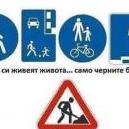Силно ЕМП от GSM клетка
-
Последна активност
-
- 2641 мнения
- 239721 прегледa
-
- 24 мнения
- 28357 прегледa
-
- 551 мнения
- 13781 прегледa
-
Руско-украинската война 2022-2024 година. 1 2 3 4 188
От Р. Теодосиев, in Руско-украинската война 2022 година.
- 4692 мнения
- 351684 прегледa
-
- 1407 мнения
- 105331 прегледa
-
-
Последно разглеждащи 0 Потребители
- No registered users viewing this page.


Препръчано мнение
Напиши мнение
Може да публикувате сега и да се регистрирате по-късно. Ако вече имате акаунт, влезте от ТУК , за да публикувате.